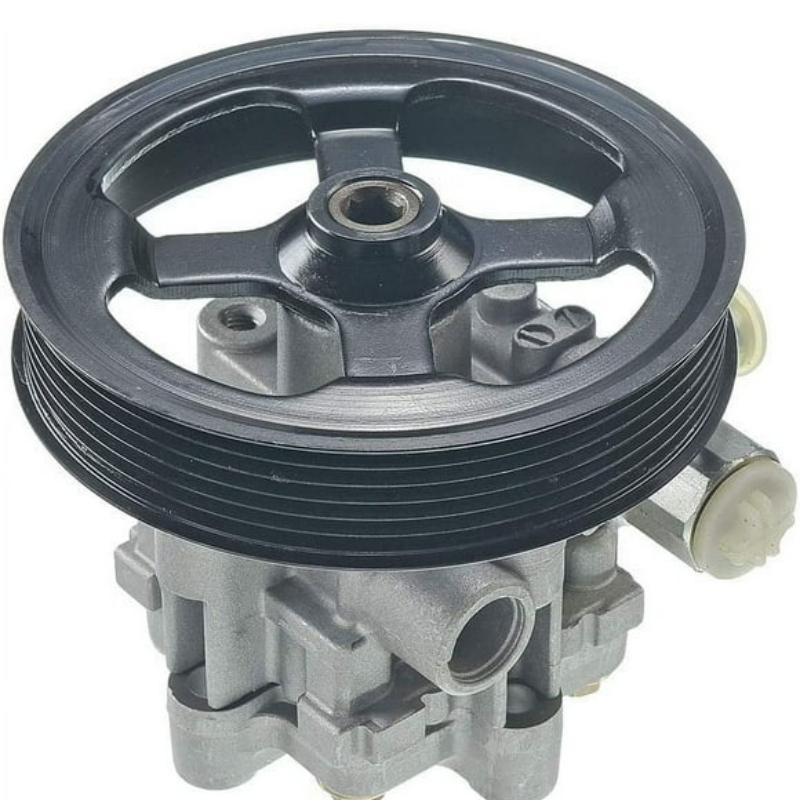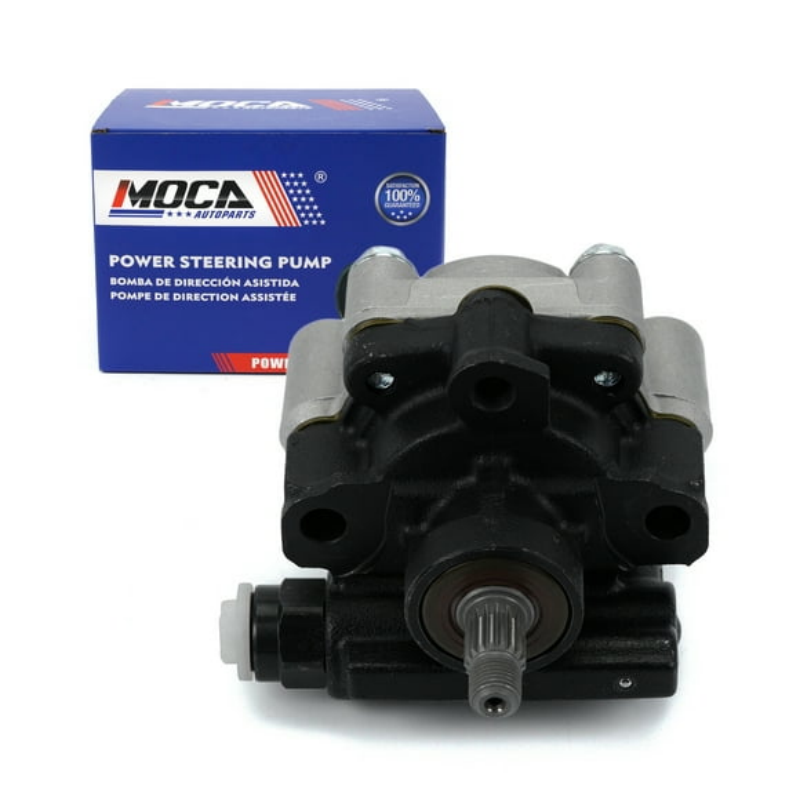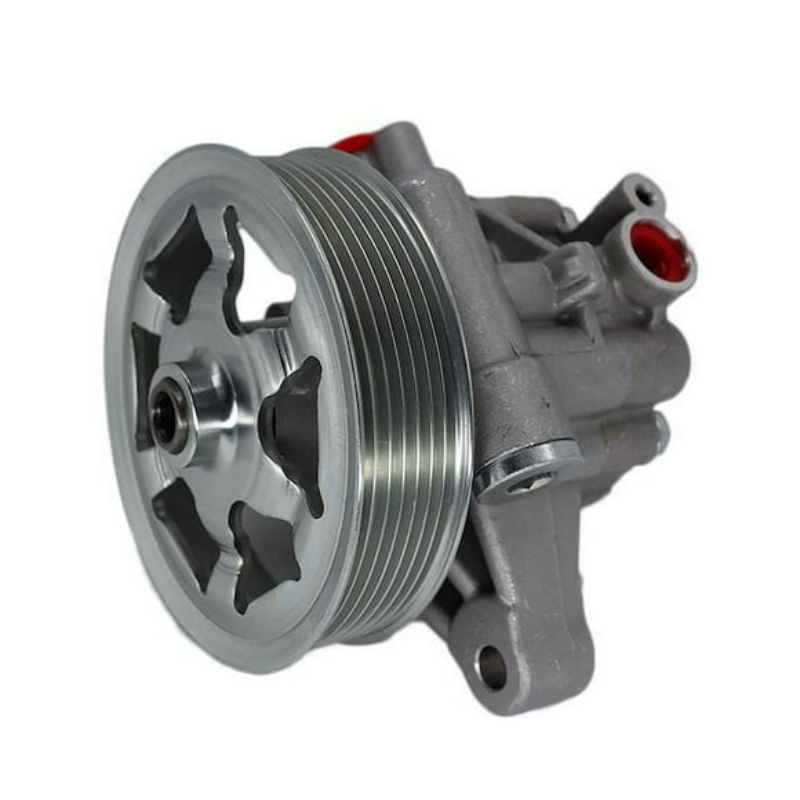Understanding Steering Assist: Enhancements in Vehicle Control
In the world of automotive engineering, advancements in technology have continuously aimed to make vehicles safer, more comfortable, and easier to control. One of the most significant innovations in recent years has been the development of steering assist systems. Steering assist is designed to enhance the driver’s control over the vehicle, particularly during critical maneuvers such as cornering, parking, and high-speed driving. This technology can take many forms, ranging from advanced electronic power steering (EPS) to traditional hydraulic steering assist systems. By providing additional torque as needed, assist systems improve overall handling and reduce driver fatigue during long journeys. As we delve deeper into the subject of steering assist, this article will explore its various types, benefits, operational mechanisms, and the future of steering assist technology in the automotive industry. Ultimately, readers will gain a thorough understanding of how assist systems contribute significantly to modern driving experiences.
The Evolution of Steering Assist Technologies
The development of assist technologies has undergone significant evolution since the inception of automobiles. Understanding this historical context helps appreciate how far automotive engineering has come.
Mechanical Beginnings
Early automobiles utilized purely mechanical steering systems, where the driver manually turned the steering wheel to direct the vehicle. These systems required considerable physical effort, especially when maneuvering at low speeds or during tight turns. As automobile speeds increased, engineers recognized the need for enhancements that could mitigate the physical demands on the driver.
Hydraulic Steering Assist
The introduction of hydraulic steering systems marked a significant turning point in assist technology. Hydraulic power steering (HPS) utilized hydraulic fluid to amplify the driver’s input, enabling more effortless steering efforts. This system allowed for increased control of heavier vehicles and improved handling dynamics. While hydraulic systems improved comfort, they still had some limitations, including reliance on mechanical components, potential fluid leaks, and increased weight.
Electric Power Steering (EPS)
As technology advanced, the industry began transitioning to electric power steering (EPS). EPS systems utilize electric motors to provide assistance, eliminating the need for hydraulic fluid and reducing weight. These systems offer several advantages, such as improved energy efficiency, customizable steering feel, and the ability to integrate with advanced driver assistance systems (ADAS). EPS systems can adjust steering assistance based on driving conditions, enhancing overall vehicle dynamics.
Steering Assist and Autonomous Driving
With the rise of autonomous driving technology, steering assist systems have taken on new forms. Advanced systems incorporating sensors and artificial intelligence allow vehicles to maintain lane positioning, automatically adjust steering during turns, and even park themselves. These systems significantly enhance safety and convenience for drivers, paving the way for a future where assist becomes even more critical.
Understanding the evolution of steering assist technologies provides insight into the advancements that have shaped modern driving experiences.
How Steering Assist Works
To fully appreciate steering assist, it is crucial to explore its underlying mechanisms and how they function to enhance vehicle control.
Overview of Steering Systems
At its core, a steering system’s primary objective is to convert the rotational movement of the steering wheel into directional movement of the vehicle’s wheels. Steering assist mechanisms improve this process by reducing the effort required by the driver while providing accurate feedback about the vehicle’s orientation and position.
Electric Power Steering (EPS) Mechanism
With EPS becoming the dominant steering assist technology, understanding its general operation is essential:
- Electric Motor Activation: EPS systems engage an electric motor when the driver turns the steering wheel. This motor provides additional torque to assist the driver in steering, particularly at low speeds or when navigating tight corners.
- Torque Sensors: EPS systems utilize torque sensors to detect the amount of effort the driver exerts on the steering wheel. This data allows the system to determine the appropriate level of assistance needed.
- Feedback Mechanism: The steering assist system also incorporates feedback to give the driver a sense of road feel and handling. The EPS adjusts the amount of assistance based on speed and drive conditions, ensuring responsive handling.

Hydraulic Power Steering (HPS) Mechanism
While the industry is moving toward electric systems, many vehicles still utilize hydraulic power steering systems. Here’s a brief overview of how hydraulic systems function:
- Hydraulic Pump: The hydraulic power steering system uses a pump driven by the vehicle’s power steering belt to circulate hydraulic fluid through hoses.
- Assistance at the Rack: When the driver turns the steering wheel, the hydraulic fluid is directed to the steering rack, where it forces additional assistance to reduce steering effort.
- Feedback and Control: At higher speeds, less hydraulic assistance is provided, giving the driver a better sense of control and road feedback as the effort required increases.
Understanding these mechanisms allows users to recognize the essential functions of various assist systems.
Benefits of Steering Assist Technology
Steering assist technology offers numerous benefits that contribute to a safer and more enjoyable driving experience. Here are some key advantages provided by assist systems:
Enhanced Comfort and Reduced Fatigue
One of the most significant benefits of assist technology is the reduction of driver fatigue, primarily during long trips or stop-and-go traffic situations. By providing additional assistance, assist systems minimize the physical effort required to steer the vehicle, allowing drivers to focus on the road ahead.
Improved Maneuverability
Steering assist systems enhance the maneuverability of vehicles, especially in tight spaces. The technology provides additional help when parking, navigating through crowded urban areas, or executing sharp turns. As a result, drivers can navigate more confidently and with less stress.
Increased Safety Features
Modern assist systems often integrate with advanced driver assistance systems (ADAS) that promote safety. Many of these features help prevent accidents by providing lane-keeping assistance, automatic steering adjustments, and more.
Customization of Steering Feel
Electric power steering systems allow for customizable steering settings. Depending on personal preferences or driving conditions, drivers can adjust the steering response to make it feel sportier or more relaxed. This level of customization enhances overall driving satisfaction.
Adaptive Steering Response
Steering assist systems can adapt to changing conditions, such as speed and road surfaces. For example, a car might provide less assistance during high-speed driving to give a better sense of control and more help when slowing down for parking or low-speed maneuvers.
Environmental Benefits
By efficiently using electric motors rather than hydraulic pumps, assist systems contribute to lower fuel consumption and reduced emissions. The energy savings of using electric motor systems highlight their importance in eco-friendly driving.
Overall, these benefits demonstrate why steering assist systems have become a standard feature in modern vehicles, enhancing the driving experience while contributing to safety.
Common Issues and Troubleshooting Steering Assist Systems
While steering assist technologies provide numerous advantages, issues can arise that may require attention. Recognizing potential problems and learning how to troubleshoot them can save time and ensure a safe driving experience.
Warning Signs of Steering Assist Issues
There are several telltale signs that may indicate a problem with your steering assist system, including:
- Unresponsive Steering: If the steering feels stiff or unresponsive, it could indicate an issue with the electric motor or a failure of the hydraulic system.
- Noise During Steering: Unusual sounds, such as grinding or whirring when turning the wheel, may signal a failing component or low fluid levels in hydraulic systems.
- Warning Lights on the Dashboard: Many modern vehicles have warning lights that illuminate when there is an issue with the assist system. If these lights appear, it is essential to investigate the problem promptly.
Troubleshooting Steps
If you suspect an issue with your steering assist system, consider following these troubleshooting steps:
- Inspect Fluid Levels (for HPS Systems): If your vehicle uses hydraulic power steering, check the fluid levels in the reservoir. Low fluid can lead to stiff steering or complete loss of assist.
- Check for Leaks: Inspect hoses and connections for signs of leaks or damage. If you spot leaking fluid, it may indicate a need for hose replacement or repairs.
- Test Electrical Connections (for EPS): For electric power steering systems, make sure the electrical connections are secure. Loose wiring can disrupt functionality and cause malfunctions in the assist system.
- Reset the System: In some cases, resetting the vehicle’s power can resolve temporary issues. Disconnecting the battery for a few minutes may reset the electronic components.
- Seek Professional Help: If troubleshooting efforts do not yield results, it is prudent to seek professional assistance. Mechanics specializing in steering systems can perform diagnostic tests to identify underlying issues.
Understanding these common issues and troubleshooting techniques ensures drivers can maintain their assist systems effectively.
Future Trends in Steering Assist Technology
The world of automotive technology is ever-evolving, and steering assist systems are no exception. Future trends indicate exciting developments that promise to enhance the driving experience further.
Integration with Advanced Driver-Assistance Systems (ADAS)
As vehicles increasingly incorporate ADAS features, steering assist systems will be integrated with these technologies. Future innovations may include fully automated driving capabilities, where steering assist works seamlessly with adaptive cruise control, lane-keeping assistance, and collision avoidance systems.
Enhanced Feedback Mechanisms
Electric steering assist systems may develop more sophisticated feedback mechanisms, providing drivers with a real-time sense of the road surface and driving conditions. Enhanced feedback could lead to more intuitive steering responses and increased driver confidence.
Adoption of Artificial Intelligence
As vehicles become smarter, assist systems may employ artificial intelligence to adapt to a driver’s style and preferences. AI-driven systems could analyze driving habits and adjust responsiveness accordingly, offering a personalized experience.
Focus on Sustainability
With the growing emphasis on sustainability and reduced carbon footprints, future assist technologies will likely prioritize eco-friendly materials and energy-efficient designs. Manufacturers may explore lighter materials to reduce overall vehicle weight and improve steering performance.
Wireless Technologies
Emerging wireless technologies may open new avenues for steering assist systems. Integrated systems could allow for remote diagnostics and updates, keeping vehicles at optimal performance while minimizing the need for physical interventions.
By staying informed about these trends, drivers can anticipate the future developments in assist technologies and how they will continue to shape the driving experience.

Conclusion
In conclusion, steering assist technology has transformed the automotive world, offering improved safety, enhanced comfort, and greater vehicle control. From traditional hydraulic systems to modern electric power steering, advancements in assist technology have significantly impacted how we drive. Understanding how these systems work is crucial for both vehicle owners and mechanics alike.
By learning the types of assist technologies, recognizing the benefits and potential issues, and staying updated about future trends, drivers can maximize their ownership experience. Maintenance and awareness are integral to preserving the functionality of assist systems, ensuring that your vehicle remains safe and enjoyable to drive.
As the industry continues to evolve, steering assist technology promises to deliver new innovations that enhance our driving experiences while prioritizing sustainability and safety. The future is bright for steering assist systems, making it an exciting time for both enthusiasts and everyday drivers alike.
